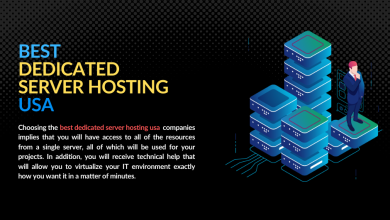
Virtual Machines vs Containers: the real difference
Virtualization has been evolving network computing since the 1970s. It has become more than a decade-old technology just like our cloud computing. Just like virtualization, free virtual machines have been around for years now.
Where virtualization has been creating a paradigm shift in how technology works, containers have paved their way into the world of technology. Though a recent revolution, containers are already showing improvement in the way data centers work and application development. Among all the containers, Linux containers with LXC and Solaris are the oldest of all.
The biggest of the organizations use containers of their own to meet their humungous demands. But containers truly got their way into an enterprise IT when dockers launched. With its launch in 2013 complete traditional virtualization transformed into containerization.
But before you assume any similarities or differences between virtual machines and containers, let’s clear out some concepts.
What is a VM?
VM or virtual machine is a software program that imitates the function of hardware or a system to deliver its computing. A free virtual machine runs over the software or the hardware it is imitating. The hypervisor is the one that imitates all the functionalities of the software and the hardware. The underlying software or the hardware provides the environment to perform by using its resources. The set of resources provided by the actual software and the physical hardware is known as the host machine. The VM that runs over the hypervisor is referred to as the guest machine.
A typical VM consists some important elements that are-
- Storage
- Computing
- Memory
- Networking
- Hardware functionality running in virtually
A virtual machine can also contain binaries and necessary libraries for running an application. While VM stays busy with the computing, the hypervisor manages and executes the Operating system (OS).
How does a VM works?
Virtual machines work in a particular way by pooling all the virtual hardware resources and then made available to the application. Once these resources are put together, VM creates an abstraction layer to isolate from the underlying real infrastructure. The isolation is created on the physical hardware and no change gets reflected on the application. Thus, there is no effect on application performance.
Any virtual machine works like an isolated system while the underlying hardware can perform independently and freely. The operations running within a VM can be resource-intensive depending on the complexity of the application. When such resource-heavy applications are migrated from one VM to another, the OS needs to migrate simultaneously.
Although, most of the time very few applications can utilize the complete resources of a VM. This leads to a bulk of resources left unused resulting in a big drawback of a virtual machine. This defeats the purpose with which a VM was created which was resource utilization, and capacity optimization.
What is a container?
Containers work on the concept of abstraction performed at the Operating system level. With explicit functionality, containers allow applications and their modules to run independently. The containers can manage several operations and workloads by utilizing the same physical resources available. So, containers are like the lighter version of the software handling the same code and configuration. They run on bare metal servers, on hypervisors, or within a cloud infrastructure.
The capabilities of a container are more advanced than a free virtual machine. When containers work, they create multiple isolated OS environments all running under a single host system kernel. This setup can be shared with containers that are running on different functions for the application. Each container runs with help of its essential components I.e., bins, libraries, and runtime components.
How a container works?
The three necessary components of a container are responsible for its effective working. The first of these components is a Namespaces that creates a window paving a way through the underlying operating system. Multiple containers working in the same space, have their namespace with different information.
The second component is the control group which is a Linux kernel feature. It manages the resources and limits them based on the actual requirement of the container. This way, the resources like CPU, memory, disk space, and network are utilized to their full capacity.
Last but not the least, the Union file system of containers allows all the files and directories are overlaid on a single file system. The Union file system feature helps in eliminating data duplication whenever you think of deploying a new container.
Why containers over VMs?
Containers are more efficient at developing, testing, and deploying modern-day applications to operate in an environment that is isolated from the host machine. By focusing on virtualizing the OS rather than the physical hardware, containers become more portable and efficient. When developers work on the containers, they don’t need to write code into multiple VMs. It can retrieve the resources I.e., compute, storage and networking by using very few components as compared to a VM.
Containers make it possible to run an application within a single isolated environment and avoiding any effect on other components or software. Containers further remove the possibility of integral issues with libraries and application components. Thus, the applications can move from one cloud platform or a data center smoothly while performing with the same efficiency.
Wrapping up–
Containers are more consistent, efficient, and secured than your regular free virtual machines. Not only this, containers work at low latency avoiding any outage. Deploying containers will make your applications more agile by using minimum resources at the same time.
We hope all doubts regarding containers vs VMs are cleared by the time you will finish the article. We will be coming with more such latest edging technology updates and solutions. For further queries, visit our official webpage.



